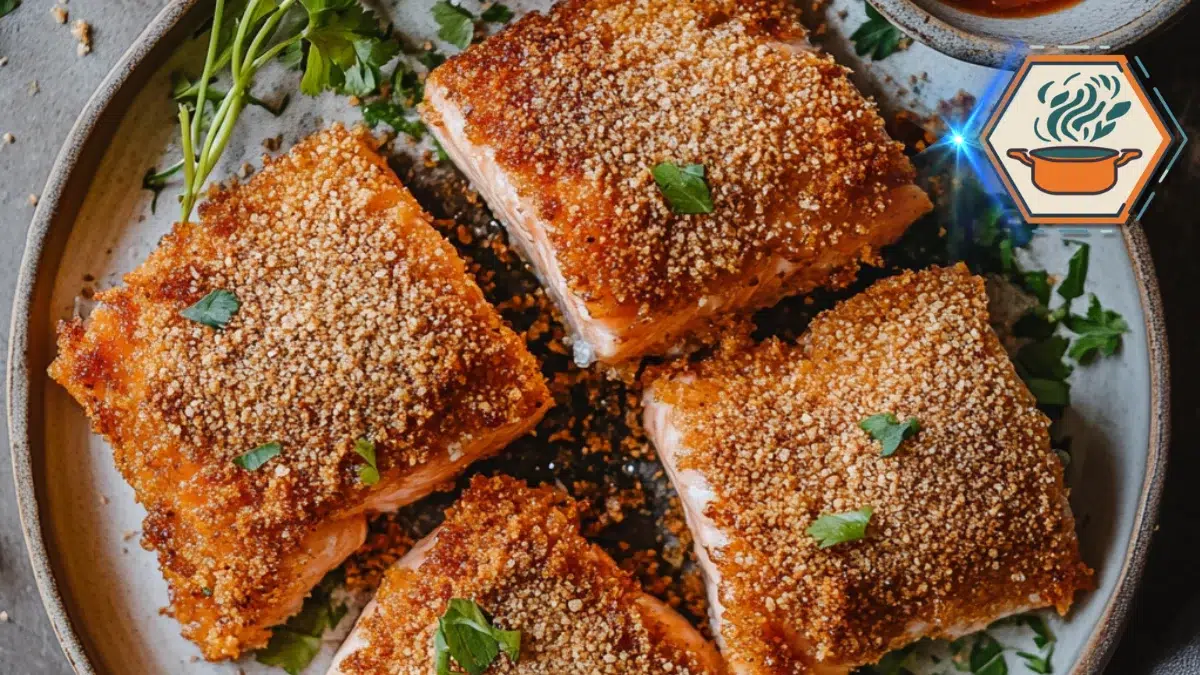Table of Contents
Introduction to Deep-Fried Salmon
Deep-fried salmon is a culinary delight that combines the rich, buttery taste of salmon with the crispy texture of deep frying. While many people wonder if this cooking method complements salmon’s natural flavors, the results often surprise even the most skeptical eaters. In this section, we will explore what deep-fried salmon is, why it tastes delicious, and what makes it perfect for frying.
1.1. What Is Deep-Fried Salmon?
Deep-fried salmon refers to a dish where salmon fillets or chunks are coated in batter or seasoned flour before they are submerged in hot oil. This method creates a golden, crispy exterior while keeping the fish moist and tender inside.
How It’s Prepared
To prepare deep-fried salmon:
- Cut the fish into fillets or smaller, bite-sized pieces for even cooking.
- Coat the pieces with batter, breadcrumbs, or spices for flavor and texture.
- Fry the salmon at high temperatures, typically around 350°F (175°C), to achieve a crisp and flavorful result.
Why Do People Choose Deep-Frying?
Deep frying enhances the taste and texture of salmon in several ways:
- It locks in the fish’s moisture, ensuring a juicy bite.
- The high heat caramelizes the coating, creating a pleasant crunch.
- This method is also quick, making it ideal for busy cooks.
Popular Styles of Deep-Fried Salmon
There are many ways to enjoy this dish, depending on personal preferences:
- Beer-battered salmon: Adds a light, airy coating with hints of malt.
- Spicy breaded salmon: Uses breadcrumbs seasoned with chili and garlic for a bold flavor.
- Tempura salmon: Features a delicate, Japanese-style batter for a lighter option.
1.2. Does Salmon Taste Good Deep Fried?
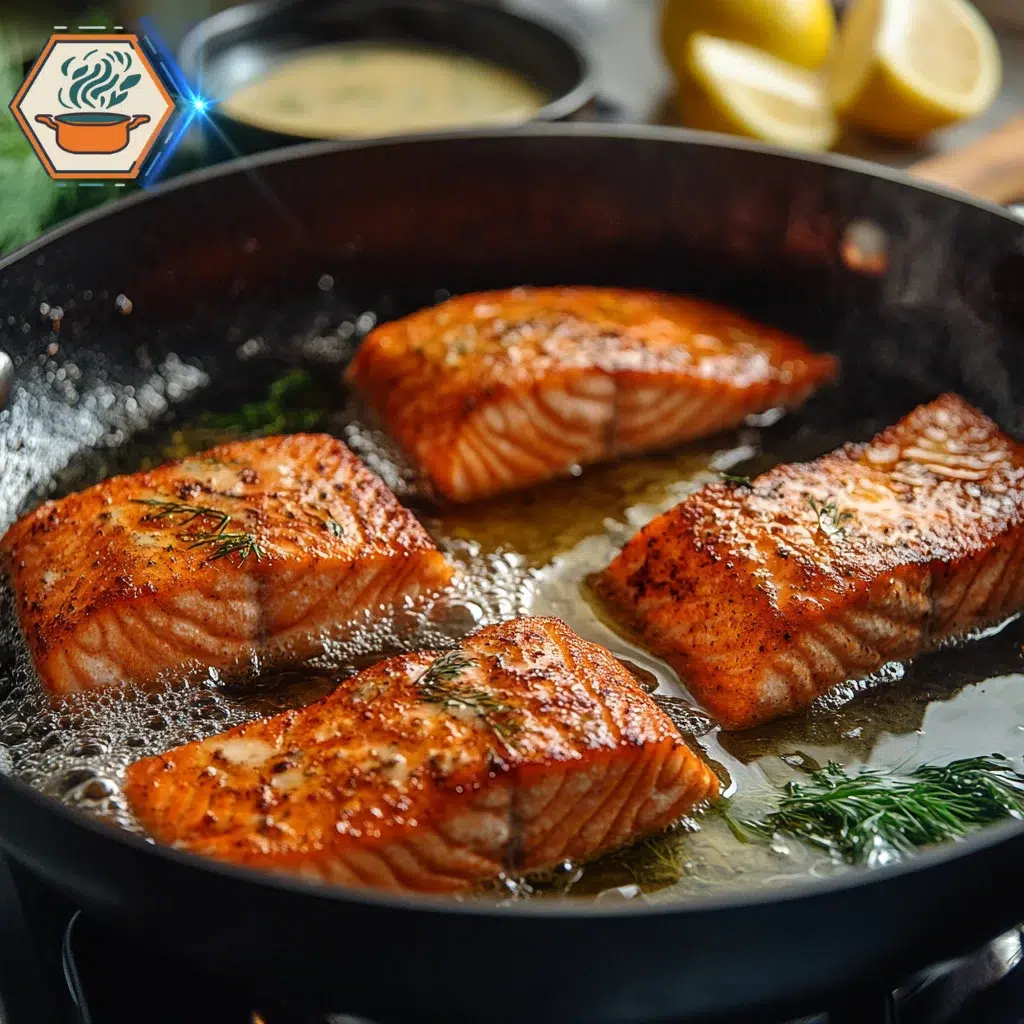
Yes, deep-fried salmon tastes fantastic, and it’s easy to understand why it’s a popular choice for seafood lovers.
What Makes the Flavor Special?
Deep frying intensifies salmon’s natural flavors by sealing in its juices. The process caramelizes the outer layer, which creates a slightly sweet, crispy crust. Inside, the fish remains tender and flaky, offering a contrast that many find irresistible.
What Experts Say About Deep-Fried Salmon
Food experts from BBC Good Food note that deep frying is an excellent way to highlight salmon’s bold taste while adding a satisfying texture. They emphasize that selecting the right oil and cooking at the proper temperature ensures perfect results.
Who Will Love It?
This dish appeals to a variety of people:
- Seafood enthusiasts looking for new ways to enjoy salmon.
- Families seeking a quick and flavorful dinner option.
- Adventurous foodies experimenting with unique recipes.
Addressing Common Concerns
Some people hesitate to try deep-fried salmon because they worry it might taste greasy or lose its natural flavor. However, when fried correctly, the oil is absorbed minimally, and the fish’s taste is enhanced rather than masked.
1.3. Key Characteristics That Make Salmon Ideal for Frying
Among all types of fish, salmon stands out as one of the best options for deep frying. This is due to its unique flavor, texture, and nutritional benefits.
Rich Flavor
Salmon’s natural oils create a buttery taste that pairs beautifully with crispy coatings. Unlike mild fish, its robust flavor doesn’t get lost during the frying process.
Firm and Sturdy Texture
The firm texture of salmon makes it perfect for frying. Unlike delicate fish that might fall apart, salmon remains intact even when submerged in hot oil.
Nutritional Advantages
Even though deep frying involves oil, salmon retains many of its health benefits:
- Omega-3 fatty acids: Known for improving heart health and brain function.
- High-quality protein: Supports muscle growth and repair.
- Essential vitamins: Such as B6 and B12, which boost energy levels.
For those who want a lighter option, air frying salmon delivers similar results with less oil while preserving its flavor and nutrients.
Adaptable to Coatings and Seasonings
Another reason salmon is ideal for frying is its ability to pair with a wide range of coatings, including:
- Panko breadcrumbs for added crunch.
- Tempura batter for a delicate and light texture.
- Spice rubs for a bold and flavorful crust.
By experimenting with different seasonings, you can customize the dish to suit your taste.
The Science Behind Deep-Frying Salmon
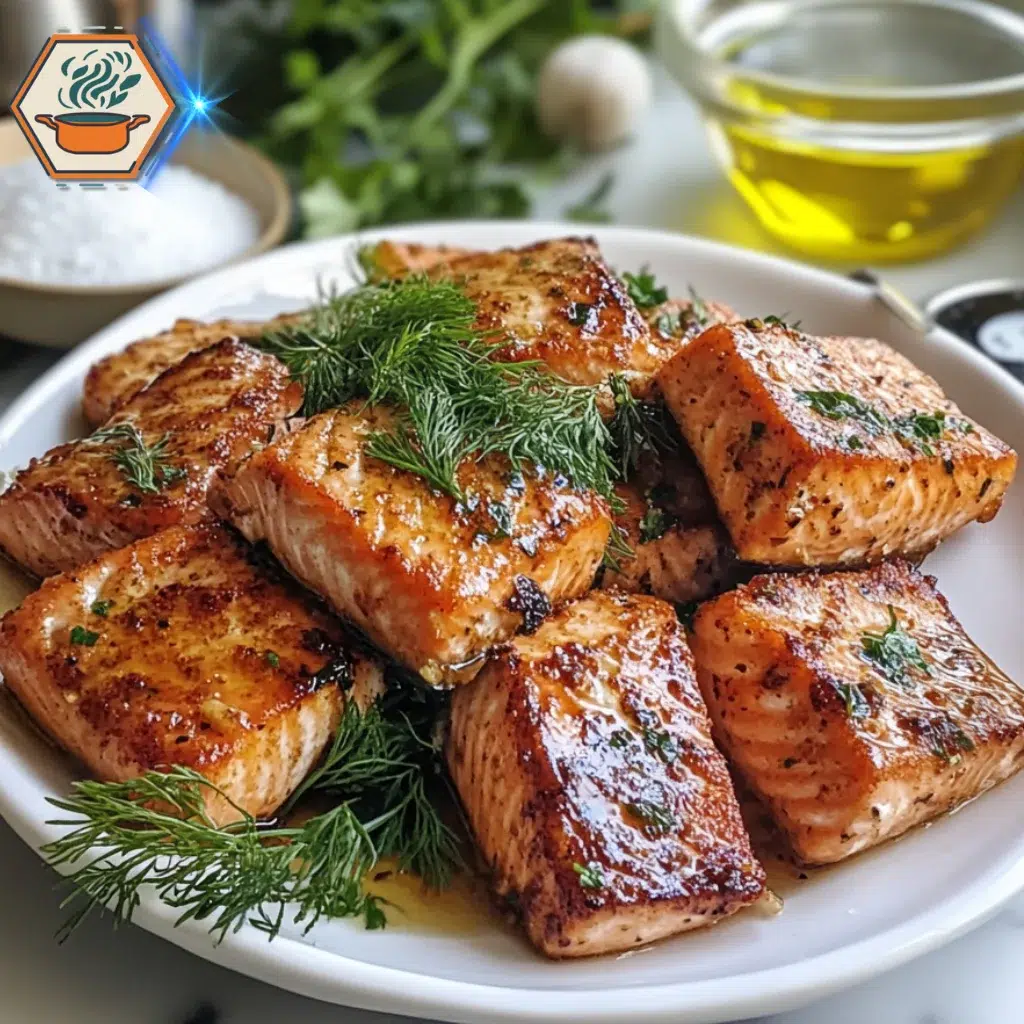
Deep-frying salmon involves immersing the fish in hot oil, leading to significant changes in its taste, texture, and nutritional profile. This section explores the intricate details of what happens when salmon is deep-fried, why it tastes the way it does, and how to perfect the process.
2.1. How Deep-Frying Affects Salmon’s Taste and Texture
Deep-frying transforms salmon’s natural characteristics in several remarkable ways:
The Impact on Texture
- The high heat creates a crispy, golden-brown crust, while the interior stays moist and tender.
- This contrast between crispy and soft textures enhances the overall eating experience.
The Role of Flavor Development
- During frying, the Maillard reaction occurs, producing the distinct flavor and aroma associated with fried foods.
- This chemical reaction happens when the surface of the fish reaches a temperature between 350°F and 375°F.
As a result, the combination of crispy texture and rich flavor makes deep-fried salmon a popular dish.
2.2. Nutritional Changes When Deep-Frying Salmon
Frying salmon may alter its nutritional content, which is something to consider for health-conscious cooks.
Omega-3 Fatty Acids Reduction
- High heat can reduce the levels of omega-3 fatty acids, which are beneficial for heart health.
Increased Calorie and Fat Content
- Salmon absorbs oil during frying, which increases its calorie and fat content.
- For those on calorie-controlled diets, this could be a drawback.
Vitamin Degradation
- Nutrients like vitamin D may break down under extreme heat, slightly reducing the nutritional benefits of the fish.
Despite these changes, deep-fried salmon remains a nutritious and delicious choice when prepared carefully.
2.3. Popular Deep-Frying Techniques for Fish
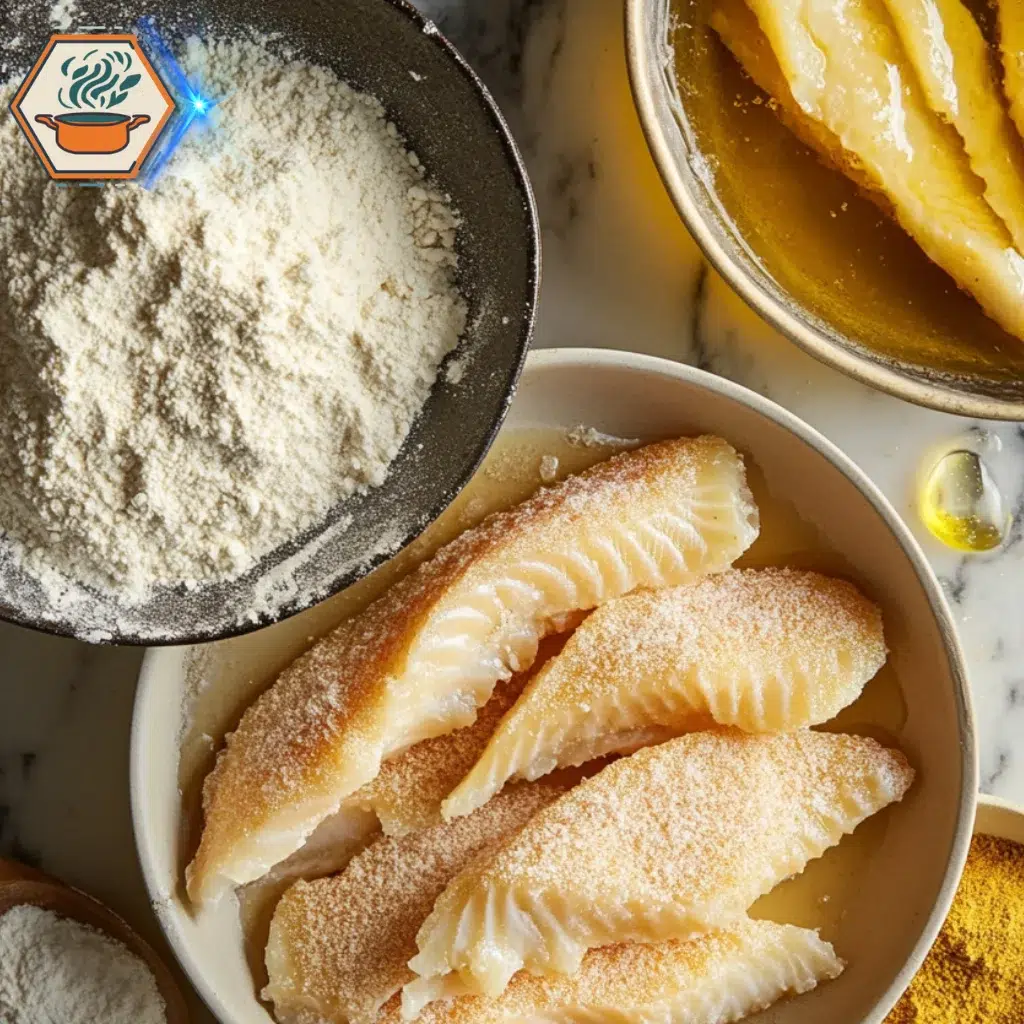
There are several effective ways to deep-fry fish, each with its own advantages.
Traditional Deep-Frying
- Fully immersing the fish in hot oil ensures a uniform, crispy texture.
- Maintaining the oil temperature between 350°F to 375°F is critical for perfect results.
Pan-Frying
- This method uses less oil and is better suited for thinner cuts of fish.
- It offers more control and is ideal for achieving a light crisp.
Air-Frying as a Healthier Option
- Air-fryers require minimal oil while still producing a crispy crust.
- This technique is gaining popularity as a healthier alternative to traditional frying.
2.4. Why the Choice of Oil Matters
The type of oil you use can significantly affect the outcome of your fried salmon.
Choosing High-Smoke-Point Oils
- Oils like avocado and peanut oil are great choices because they can handle high temperatures without breaking down.
Healthier Oil Options
- Canola oil and olive oil contain healthy fats and are better for your heart compared to traditional frying oils.
Flavor Considerations
- Certain oils, such as coconut oil, can add a unique flavor to the dish. However, they may not suit every palate.
By carefully selecting your oil and frying technique, you can achieve a balance between taste and health benefits.
How to Prepare Salmon for Deep Frying
Deep frying salmon is a delicious way to enjoy this nutritious fish, offering a crispy texture and rich flavor. To achieve the best results, it’s essential to prepare the salmon properly before cooking. Below, we’ll detail the key steps to ensure your salmon is perfectly deep-fried, from selecting the cut to troubleshooting mistakes.
3.1 Selecting the Right Cut of Salmon for Frying
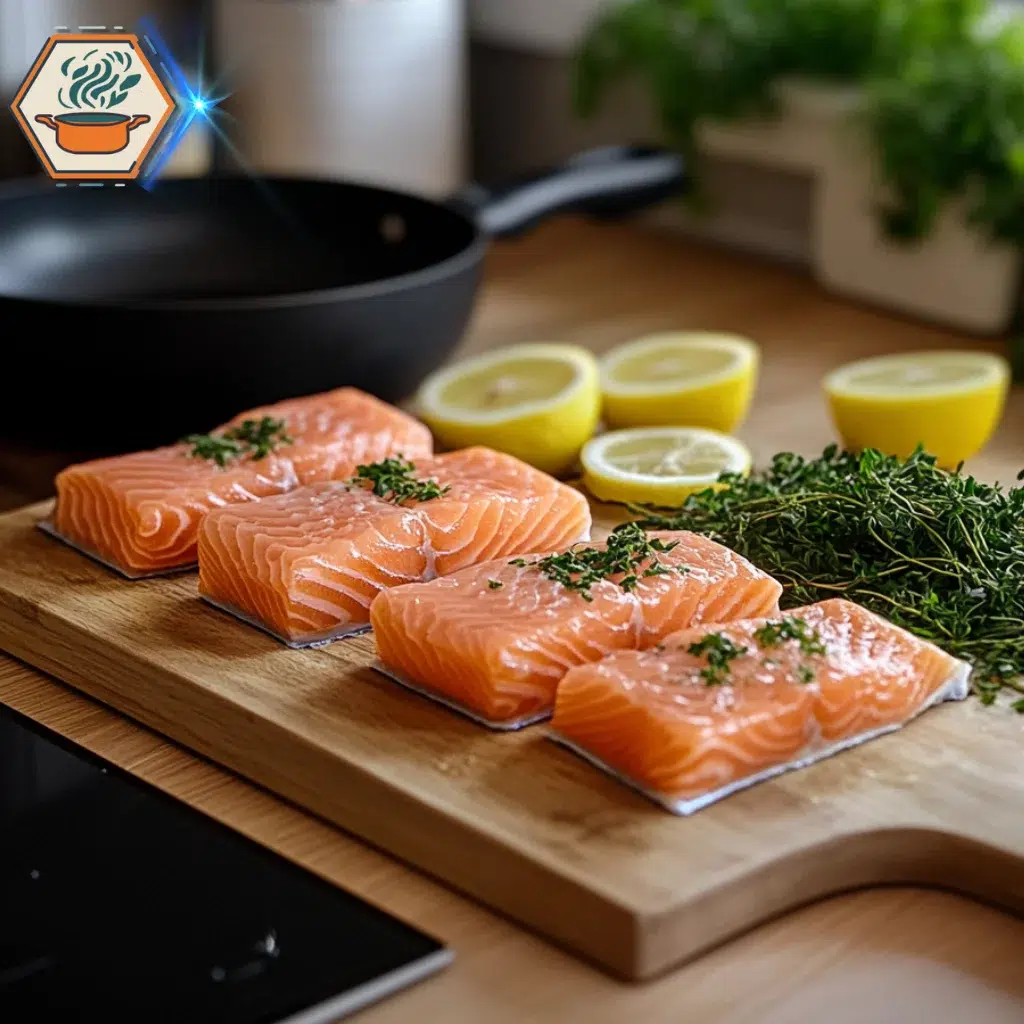
Choosing the right cut of salmon is crucial for a successful deep-frying experience. The cut you pick impacts texture, flavor, and cooking ease. Here’s what you need to consider:
- Skin-on vs. Skinless: Which Is Better?
Skin-on salmon provides additional flavor and helps the fillet hold together during frying. The crispy skin can also enhance the overall texture. Skinless salmon, on the other hand, is easier to marinate and season evenly. It’s a good choice for those who prefer not to eat fish skin. - Thickness Matters
Opt for fillets that are even in thickness to ensure consistent cooking. Uneven fillets can result in overcooked or undercooked sections. - Freshness Is Key
Fresh salmon offers the best flavor and texture. Look for fillets that are firm to the touch, with a bright color and no strong fishy odor.
3.2 Preparing Marinades and Seasonings for Optimal Flavor
Proper seasoning enhances the natural flavor of salmon and makes your dish irresistible. Here’s how to prepare your fish before frying:
- Simple Marinade Options
Combine olive oil, lemon juice, garlic, and a pinch of salt and pepper for a quick and flavorful marinade. Let the salmon sit for 15-30 minutes before cooking. - Spice Rubs
For a bold flavor, try a mix of paprika, cayenne pepper, garlic powder, and dried herbs like thyme or parsley. Rub the spices directly onto the salmon surface. - Wet vs. Dry Marinades
Wet marinades add moisture and infuse flavors into the fish, while dry rubs create a crispy outer layer when fried. Choose based on your texture preference. - : For more information on marinades, refer to this comprehensive guide on marinating fish.
3.3 Step-by-Step Instructions for Deep-Frying Salmon
Deep frying requires attention to detail for perfect results. Follow these steps:
- Choosing the Best Tools and Equipment
- Use a deep fryer or a heavy-bottomed pot with high sides to prevent oil splatters.
- A thermometer is essential for monitoring oil temperature.
- Use a slotted spoon or tongs for safe handling of the salmon.
- Temperature Guidelines for Perfect Results
- Heat oil to 350°F (175°C). This ensures the salmon cooks quickly and evenly without becoming greasy.
- Monitor the oil temperature regularly to avoid overheating.
- Step-by-Step Process
- Pat the salmon fillets dry with paper towels to remove excess moisture.
- Coat the fish lightly with flour, cornstarch, or a breadcrumb mixture for added crunch.
- Slowly lower the salmon into the hot oil using tongs. Fry in small batches to maintain the oil temperature.
- Cook for 4-5 minutes or until the fish is golden brown and crispy.
- Use a slotted spoon to transfer the salmon to a paper towel-lined plate to drain excess oil.
3.4 Troubleshooting Common Mistakes When Deep Frying
Even experienced cooks encounter issues when deep frying. Here’s how to address common problems:
- Uneven Cooking
Ensure fillets are of similar size and thickness. Avoid overcrowding the pan to maintain consistent oil temperature. - Greasy Salmon
If your fish is too greasy, the oil may not have been hot enough. Always preheat the oil to 350°F and keep it steady during frying. - Burnt Exterior, Raw Interior
This happens when the oil is too hot. Use a thermometer to monitor the temperature carefully and fry at the recommended range. - Sticking to the Pan
If salmon sticks to the frying basket or pot, ensure the oil is hot enough before adding the fish. Lightly coat the fish with flour or breadcrumbs to create a protective layer.
Frequently Asked Questions (FAQ) About Deep-Fried Salmon
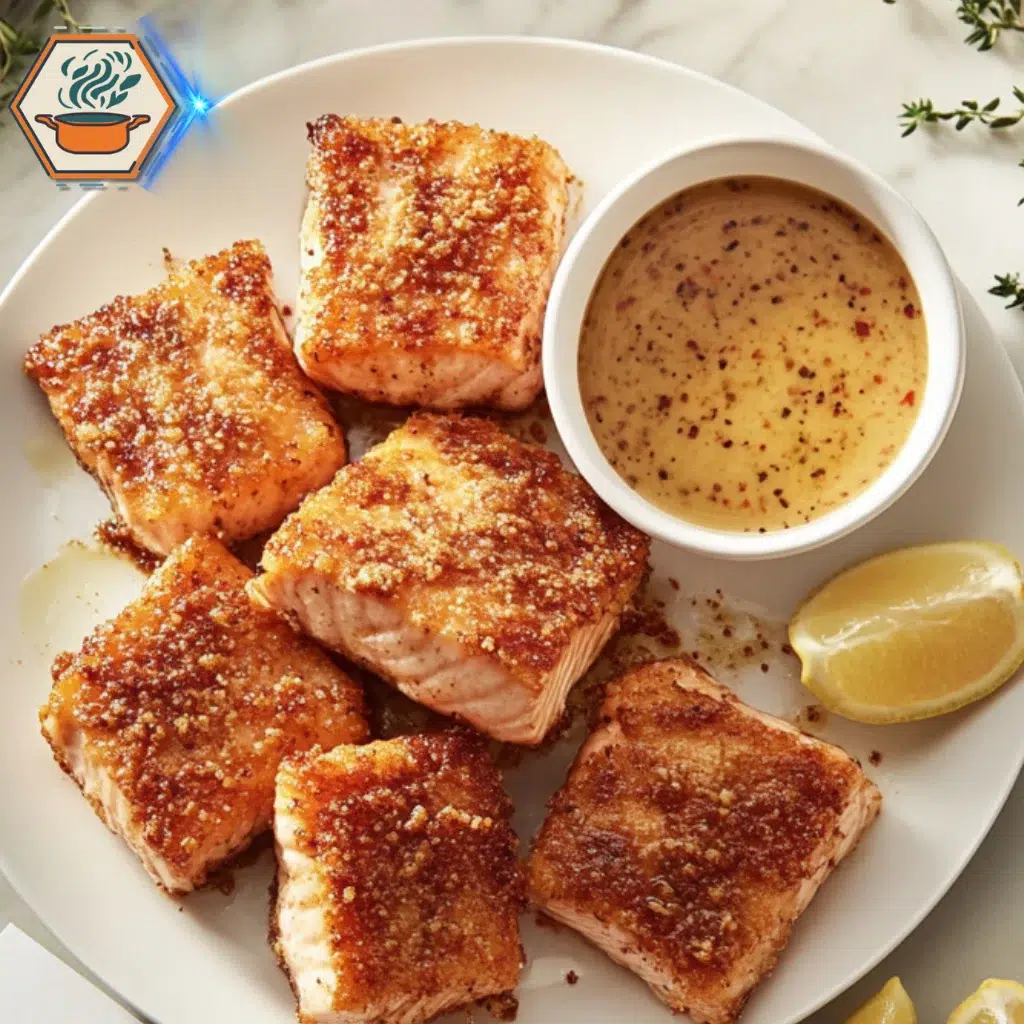
Deep-fried salmon has grown in popularity due to its unique flavor and crisp texture. In this section, we address common questions to help you make the most of your cooking and enjoy this dish responsibly and healthily.
5.1. Is Deep-Fried Salmon Healthier Than Other Fried Fish?
Deep-fried salmon can be a healthier option compared to other fried fish, depending on the type of fish and preparation method. Salmon is rich in omega-3 fatty acids, which support heart health, brain function, and reduce inflammation.
However, the health benefits of salmon can be diminished if fried in unhealthy oils or if coated with excessively heavy breading. Choosing oils with a high smoke point, such as avocado oil or grapeseed oil, can help retain more nutrients during frying.
Tips for Healthier Frying
- Use light batter or coating.
- Avoid reusing frying oil.
- Serve with healthy sides like steamed vegetables or a salad.
5.2. Can You Deep Fry Frozen Salmon?
Yes, you can deep fry frozen salmon, but it’s important to follow certain precautions to ensure even cooking and avoid accidents. When frying frozen salmon, the exterior can cook faster than the inside, leading to uneven results.
Steps to Fry Frozen Salmon Safely
- Thaw the Salmon: If possible, thaw the salmon in the refrigerator overnight.
- Pat Dry: Moisture on frozen fish can cause oil splatter. Dry it thoroughly with paper towels.
- Adjust Frying Time: Increase cooking time slightly and monitor the internal temperature. Salmon is cooked at an internal temperature of 145°F.
5.3. What Are the Best Oils to Use for Deep Frying Salmon?
Selecting the right oil is key to achieving perfectly fried salmon. Oils with a high smoke point and neutral flavor are ideal, as they withstand high temperatures without breaking down or imparting strong flavors to the fish.
Recommended Oils for Deep Frying:
- Avocado Oil: High smoke point and rich in healthy fats.
- Peanut Oil: Popular for its stability and neutral taste.
- Canola Oil: Affordable and widely available, with a mild flavor.
Oils to Avoid:
- Olive oil (low smoke point)
- Butter or margarine (not stable for deep frying)
5.4. How Do You Prevent Overcooking Salmon When Frying?
Overcooking salmon can result in a dry, chewy texture, which diminishes its natural flavors. To avoid this, timing and temperature control are crucial.
Steps to Prevent Overcooking:
- Monitor Temperature: Keep the oil at a steady 350-375°F. Use a thermometer to avoid fluctuations.
- Short Frying Time: Salmon typically needs only 3-4 minutes per side to cook through.
- Test Doneness: Use a fork to check if the fish flakes easily. Alternatively, use a meat thermometer to ensure it reaches 145°F.
Additional Tip:
Serve the salmon immediately after frying to preserve its crispy texture and moist interior.
5.5. Does Deep Frying Remove Salmon’s Omega-3 Benefits?
Deep frying does not entirely remove the omega-3 fatty acids in salmon, but the process can reduce their concentration due to high heat. To retain as much of these beneficial fats as possible, use gentler frying methods or shorter frying times.
Tips to Preserve Omega-3s During Frying:
- Use oils rich in unsaturated fats.
- Avoid overheating oil.
- Fry salmon with its skin on to act as a protective barrier.

